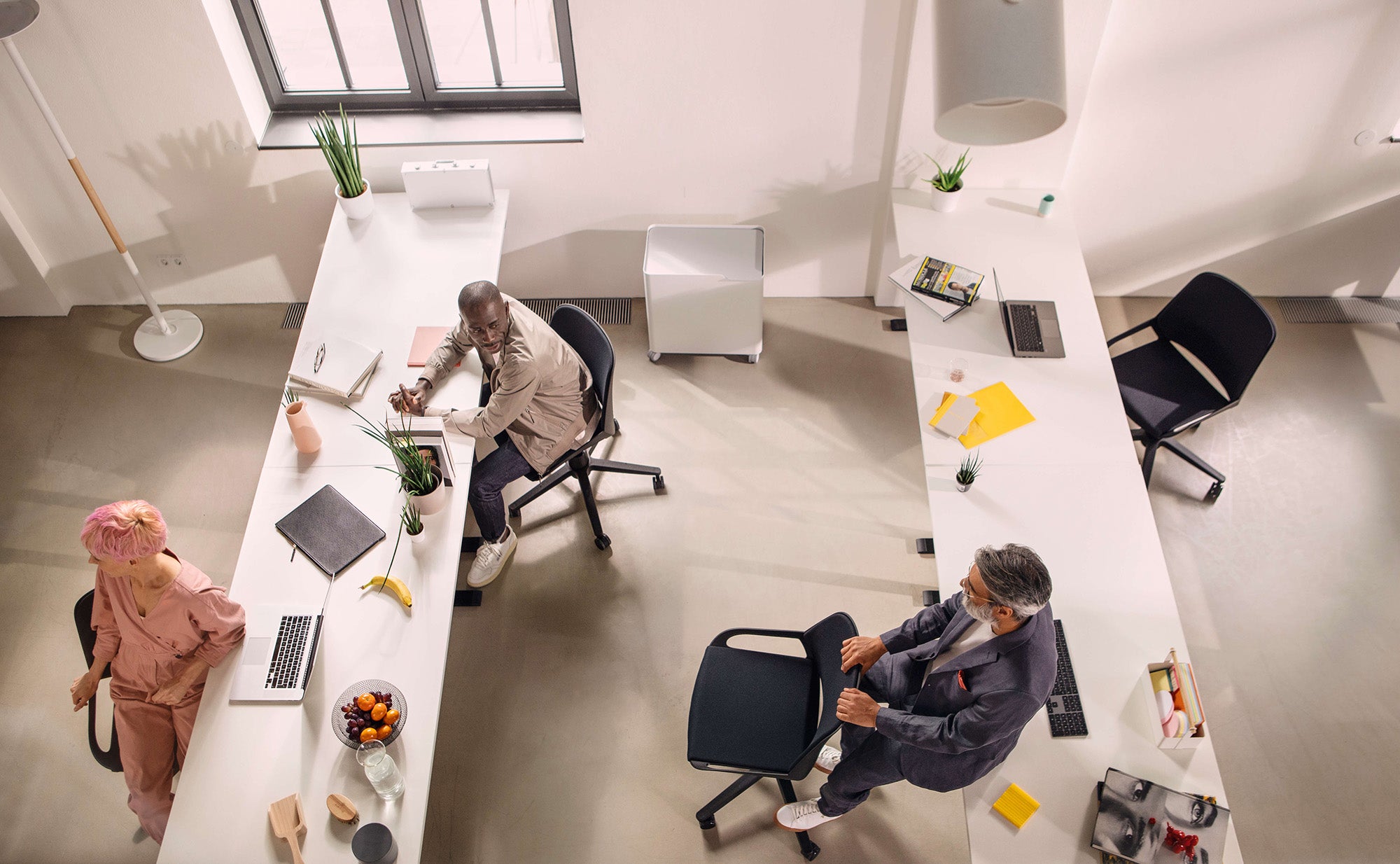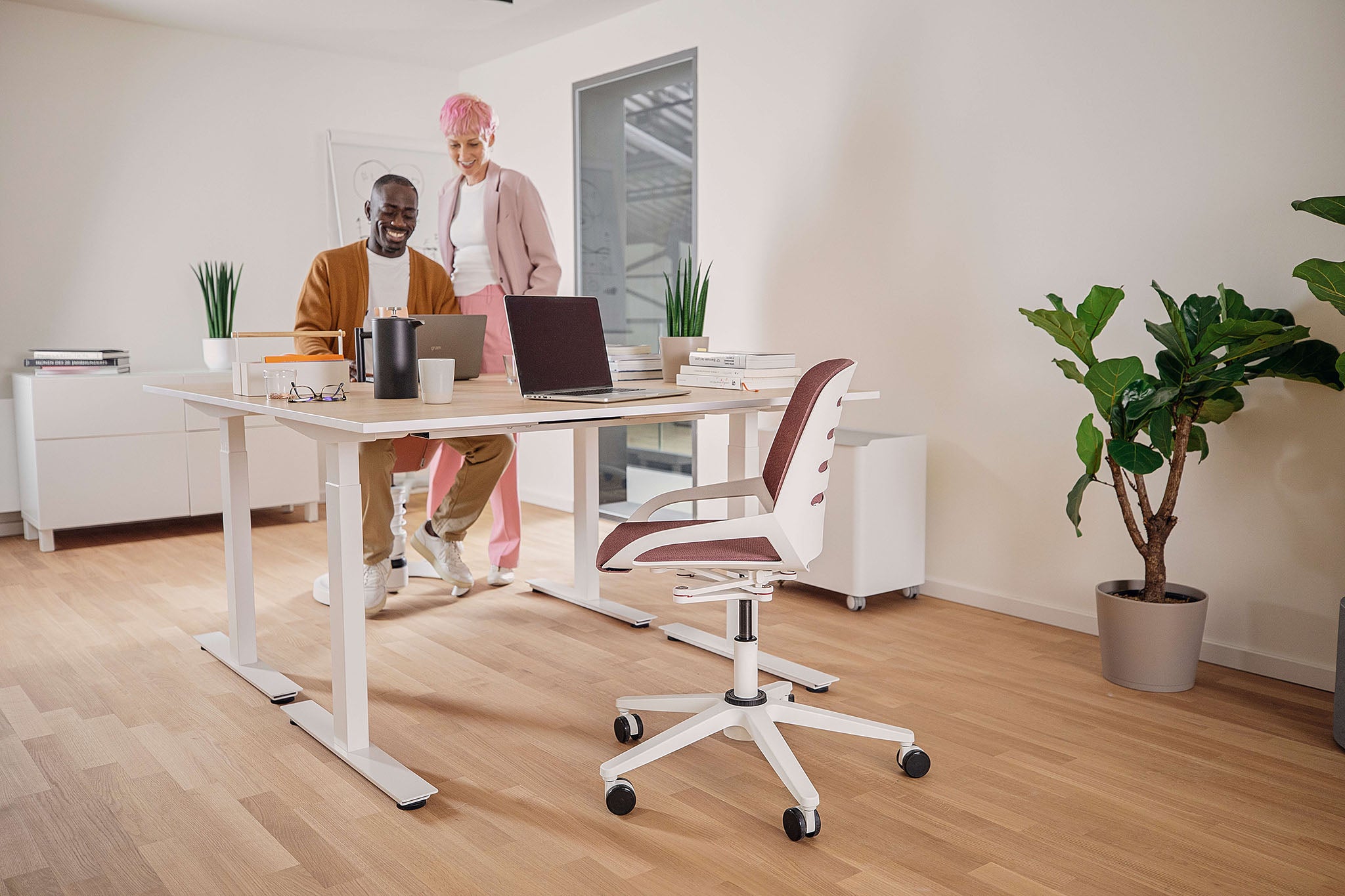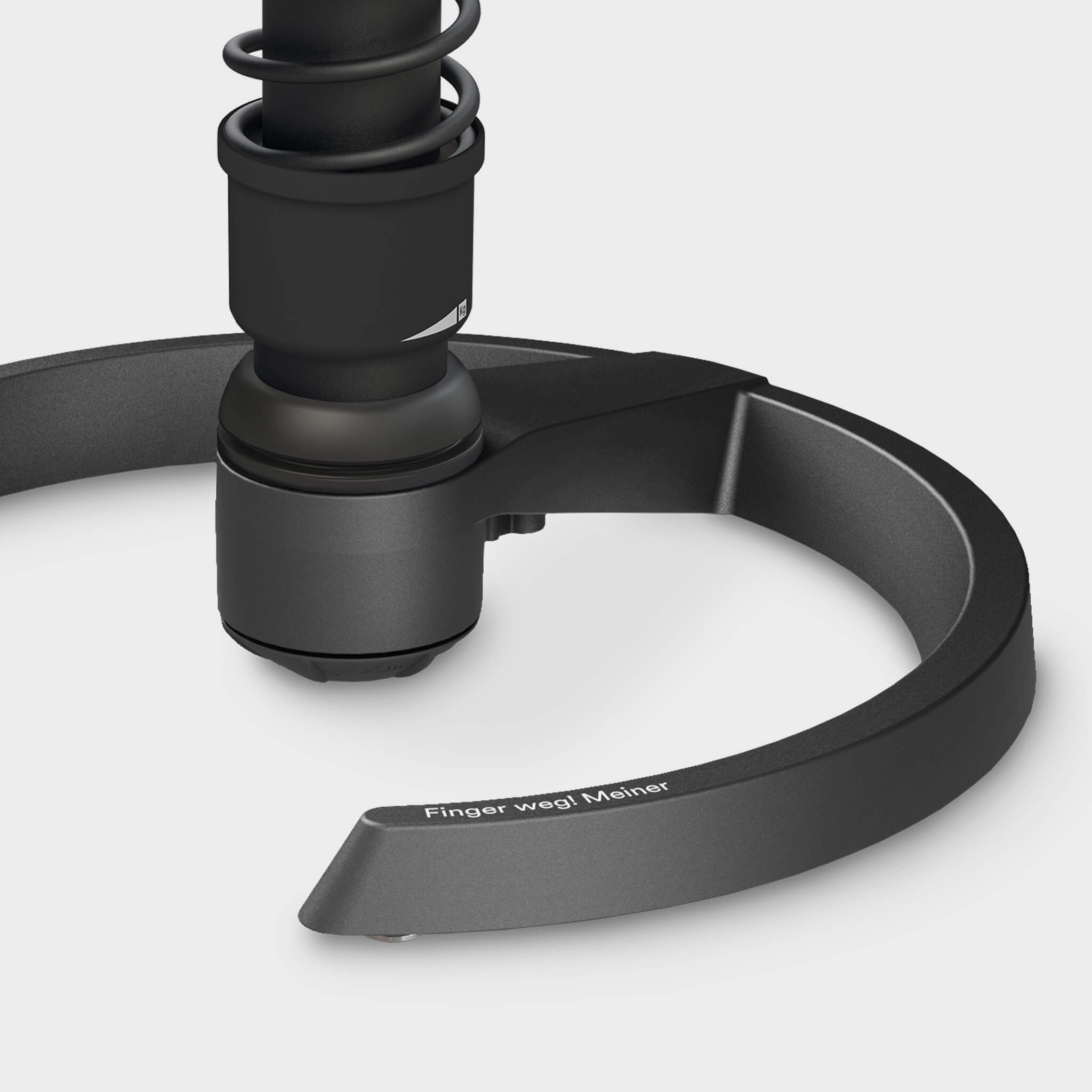Dietlind Walger (Chief Product Development Officer at Aeris) and Andreas Ostwald (ostwalddesign) have developed the latest innovation from Aeris - the Aeris Numo Task. The two talk about the creation and design process, challenges and what makes the new Aeris chair special.
What prompted the Aeris Numo Task project? What was the basic idea?
Dietlind Walger. The basic idea for the Numo Task came from the combination of various "technology projects" and further ideas from the Numo project, an Aeris chair that is already on the market. In the "drawer" there was already the "spring leg light" project - a spring leg that was to be slimmer than that of the Aeris Swopper, but still swings well. In addition, the spring leg was to be designed so that it could be replaced by a standard chair column at any time. And then at that time there was another successfully implemented technology project - the SAM - Self Adjusting Motion Element. This is a joint that always allows the chair to deflect the same in all directions, regardless of the user weight. And we had understood - confirmed by the Red Dot Award "best of the best" and customer feedback - that the design of the Numo was very well received. And then there was the innovative Numo kinematics, which allows the chair user to move forwards and backwards very comfortably.
And so the idea was born to combine all of this to develop a new generation of office chairs for Aeris. In the end, everything just fit together very well.
Was it challenging that the Aeris Numo Task was based on an existing design (Aeris Numo)? Would it have been easier to start from scratch?
Dietlind Walger. No, actually the opposite was the case – we already knew from the feedback we received about the Numo that people liked the design language. And we also wanted to deliberately expand the Numo family so that we could offer the right chair for different areas of use such as the office, home office or living area.
Andreas Ostwald. It was simply a logical consequence to combine the Numo with the newly developed SAM mechanism, because, as Dietlind said, we had already received a lot of positive feedback on the Numo.
How do you approach such a project? How do you start? With a drawing or a model? Are there certain strategies or routines that you use again and again?
Andreas Ostwald. Everything starts with the creation of 3D data in the CAD system. This data was then used to build prototypes that were used for both functional tests and design meetings. The data was then refined with each round until suppliers could be contacted and commissioned.

How do you create this unique combination of technology and design? For example, is the focus first on developing the mechanics and then comes the design, or do both go hand in hand?
Dietlind Walger. One of the special features of the Aeris product development process is the "starting perspective". The first thing we look at is how the product has to work so that the user experiences real added value for their health and well-being. But then the first design ideas are quickly developed in parallel and, ideally, technology and design development go hand in hand. Andreas is a designer who "thinks deeply" about technology and manufacturability right from the start, but never leaves the thread of the design. This makes the collaboration very pleasant and successful.
Andreas Ostwald. Coherent design always goes hand in hand with the development of technology in a very complex process. In this sense, there is no clear demarcation, but everything merges into a larger whole and includes construction, cultural history, behavioral habits, trend scouting and material preferences.
What materials were used?
Dietlind Walger. With the Numo Task, as with all other Aeris products, the unique movement function can only be fulfilled by specifically developed parts. This means that we do not use standard components; instead, each individual component has to be specially designed and manufactured. Most components are made from so-called tools. These tools are like a kind of waffle iron, from which specially shaped parts made of aluminum and plastic are created. And rubber is also used as a material for the newly developed SAM movement element.
Did you also focus on sustainability when developing the Aeris Numo Task?
Dietlind Walger. The topic of sustainability must always be the focus of new product developments. This includes topics such as product durability, material selection, separability and transport. The best sustainability record is achieved by a product that lasts a very long time and that is always our main goal. That is why our products are thoroughly tested by the TÜV during the development process. And all components of the chair can be separated and then recycled in their pure form. For example, the aluminum for the die-cast elements is 98% recycled material. And with the "Cura" upholstery fabric, we use a material that was made from recycled PET bottles. What also makes us proud is the completely plastic-free packaging and the relatively small transport volume of this chair.
Were there any particular challenges during the design process?
Dietlind Walger. Andreas and I repeatedly came to points where the form had to be subordinated to the function or the manufacturing and durability requirements. But these were always really exciting discussions and Andreas always accepted the challenge and ultimately found an even better solution.

What does the Aeris Numo Task have in common with the other Aeris chairs and what makes it different? What makes it special?
Andreas Ostwald. What it has in common with other Aeris chairs is clearly its unique movement function. The Aeris philosophy is Never just sit!, i.e. creating movement exactly where it is needed most, namely when sitting. However, in order to create these natural, free movements of the human body when sitting, special dynamic "mechanics" are required. The SAM movement element is what makes the Numo Task special. The seat can therefore move in all directions from the base. The ingenious thing about it: thanks to the sophisticated shape and material composition of this element, the deflection always remains the same, regardless of weight. So it doesn't matter whether you weigh 120 kg or just 50 kg, the feeling is the same - namely that the chair moves with you and adapts to your movements.
So you can see that the real development behind the design and construction is precise perception and observation. Analyzing the principles of human movement - that is what makes our methodology so successful.
Dietlind Walger. Yes, exactly. The Aeris Numo Task continues the successful movement concept of our Swopper and 3Dee, but with the SAM element it also brings another technical USP. And the integrated Aeris kinematics under the seat shell, which allows swinging forwards and backwards, results in multi-dimensional movement and a truly unique sitting feeling "like sitting on clouds". And the Numo Task is so wonderfully uncomplicated - you don't have to adjust much. The SAM adjusts itself automatically. And adjusting the swing behavior and seat height is quick and easy. Last but not least, there is the minimalist and unfussy design. The shape of the Aeris Numo Task is contemporary and classic at the same time, so that it fits into any environment.

Where do you see the areas of application for the chair?
Andreas Ostwald. The Numo Task is certainly designed primarily for the work area, i.e. the office and home office. But it can also be used in the living area. So let's say: it can be used anywhere where people want to sit ergonomically.
Where do you get your inspiration from? Do you follow trends or do you try not to let them influence you too much?
Andreas Ostwald . I walk through the world with my eyes open, I have inspiring friends, a circle of very good designers as informants (my former students), in other words a perfect network. I am also inspired by science, technology and languages.
Dietlind Walger. I observe trends, but always check their aesthetic durability. What inspires me much more are intelligent manufacturing processes and new materials. And then many good ideas simply come from talking to nice people - friends, colleagues or suppliers. And every now and then I also like to lose myself in the wide field of the Internet to do research.

